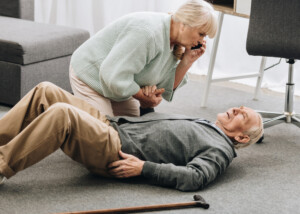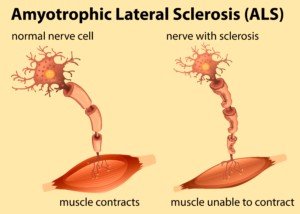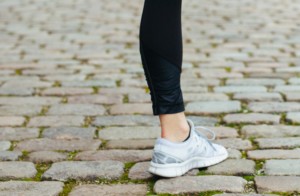
Want to know how likely you’ll suffer a hip fracture in the future?
See how long you can stand on one leg before toppling over.
How long a person can stand on one leg without holding onto anything is inversely proportional to risk of a hip fracture down the road.
Nevertheless, it’s not standard for doctors to have their elderly female patients perform this simple test during routine physicals. It should be.
A study by Lundin et al involved 351 elderly women (69-79) who were told to see how long they could stand on one leg – up to 30 seconds.
There was a catch: They had to do it with their eyes closed.
The elderly women were tracked over time after this one-leg standing test. It turns out that 40 of them, during the follow-up period, had suffered a hip fracture.
The negative linear relationship was revealed. Less time being able to stand on one leg, eyes closed, without toppling over meant a higher risk of eventually suffering from a broken hip.
For every second longer that the elderly subjects were able to maintain standing on one leg, there was a five percent drop in the risk. The full report is in the April 2014 Osteoporosis International.
As a former personal trainer, I offer my interpretation of why duration of standing on one leg is associated with hip fracture risk.
There are times when an elderly person loses their balance or standing stability and falls.
The fall results in the broken hip. The instability may occur from tripping on something or bumping into something, being accidentally bumped into, a wave of dizziness, anything.
When you have strong hip bones, you can “recalculate” the sudden instability and remain standing.
When your hips are weak, you’re more likely to go down – like my elderly mother did after she suddenly felt her sciatica pain acting up while walking down an aisle at a store.
So many people die soon after a hip fracture, but my mother recovered fully.
Had she had better balancing abilities, she would not have fallen, but instead, would have had a neuromuscular recalculation and remained on her feet, albeit in sciatica pain.
Best Way to Increase One Leg Standing Duration
As a fitness expert, I’m going to go with strength training the lower body: moves utilizing the entire lower body — engaging multiple muscle groups at once.
You might think that the best way is to just practice standing on one leg every day.
Yes, this will improve your ability to do this, BUT…it will do very little to strengthen the joints, muscles and hip bones – very little when compared to strength training.
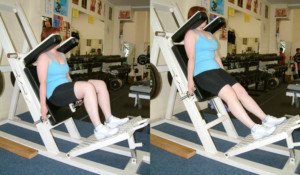
GeorgeStepanek/CreativeCommons
You cannot compare standing on one leg with a few sets of leg presses on a machine, squats while holding weight or even just body-weight only, and walking lunges while holding dumbbells (or even without).
Though these strength training moves do not require balancing in the sense that standing on one leg does, they DO dramatically improve neuromuscular coordination.
That’s why most people who engage in these strength training moves can automatically stand on one leg for half a minute without any problem!
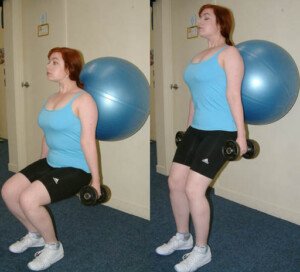
George Stepanek, CreativeCommons
We can easily say that the inability to do a LOT of things has a negative linear relationship to hip fracture, such as: jog up a hill, walk 3 mph for a quarter mile without stopping, jump rope for 30 seconds, climb a flight of stairs two at a time for 15 seconds, and deadlift 45 pounds.
In fact, a presentation at the 2014 annual meeting of the American Society for Bone and Mineral Research stated that the inability to squat down and touch the floor and stand back up, and failure at a hand grip test, was predictive of hip fracture.
The one leg stand, body squat and grip test are extremely easy to test large numbers of elderly people on.
How long they can jump rope, run up a hill (if at all), or leap up a staircase two at a time, are logistically very difficult studies to carry out.
Strength training will dramatically improve bone density.
Hip bones will become much stronger over time when one commits to squats, deadlifts, leg presses and lunges.
Stool stepping, too, will build strength. And so will yoga!
The more weight you can add to the strength training exercises the stronger the hip bones and all lower body structures will become.
And balance (neuromuscular coordination) will automatically and greatly improve – including the ability to stand on one leg for half a minute.

